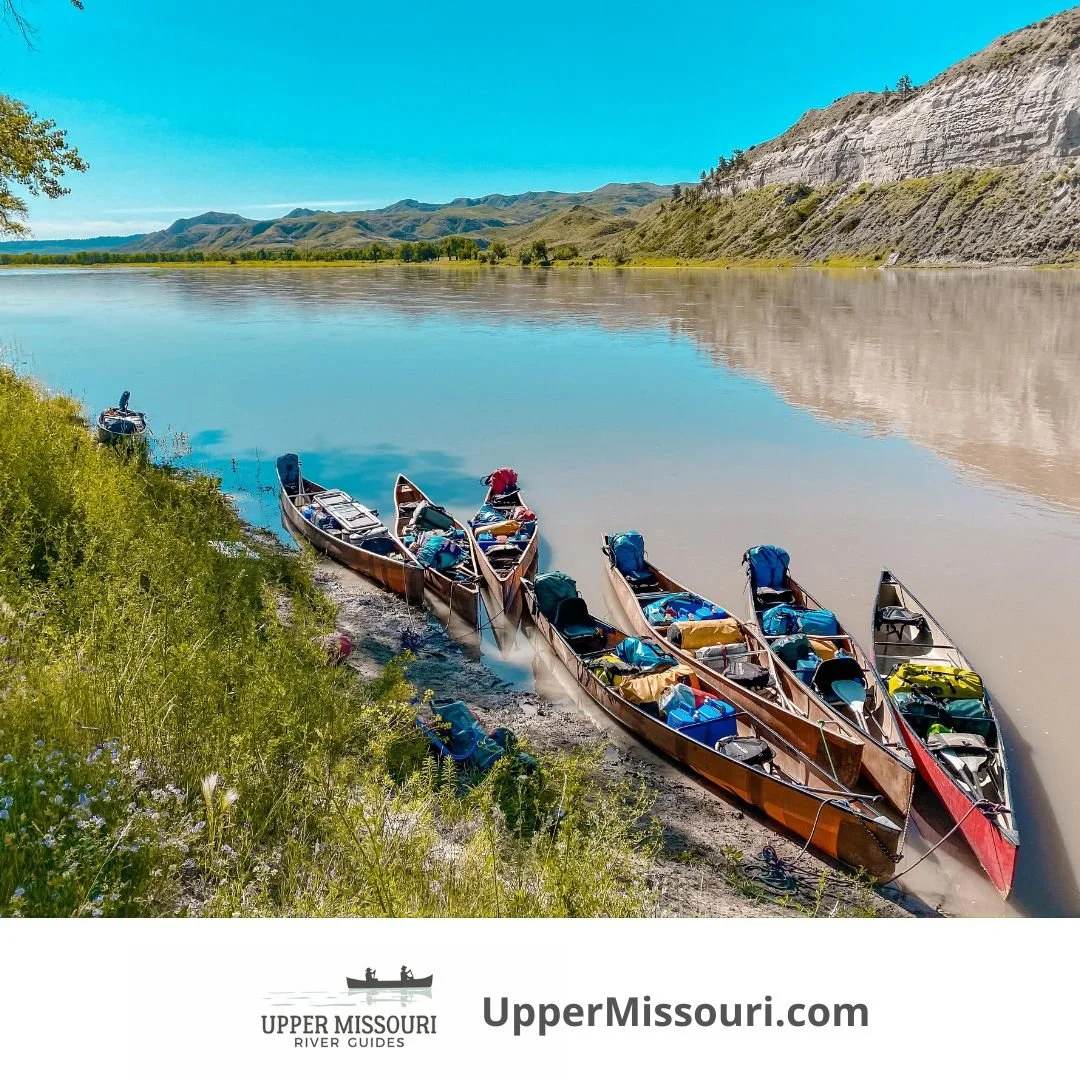The Missouri River’s history is profoundly rich and immeasurably impactful on the development of the west and our entire country. The name, Missouri, comes from the Indians that lived in the region, the Missouri and Ottee. From the Siouan language the name was, “Ouemessorita”, (pronounced Oh-ma-sur-ray) which literally means “people of the wooden canoe.” Later anglicized to be spelled and pronounced, Missouri. The Missouri was formed about 30 million years ago. The Missouri River is the longest river in North America and the 4th longest in the world (when combined with the Mississippi River system). There are 10 dams located on the Missouri River in Montana and another 5 dams located in North Dakota and South Dakota.
Read MoreMontana’s Upper Missouri River is a wilderness canoe adventure taking you into the heart of central Montana by way of a mild, meandering river. We have detailed recommendations for what to pack and considerations based on the time of the year. This adventure is appropriate to all ages and ability levels, but it’s still an adventure into the wilderness. Individuals must be prepared – both physically and with proper equipment. We provide most of the necessary gear, but the personal items you bring make a big difference. Montana is also famous for its weather variations, and your equipment, which you carry in your canoe, plays a pivotal role in ensuring you pass through the entire trip, regardless of Mother Nature, in comfort and safety.
Read MoreWoodhawk Creek is named for the men who set up shop on the banks of the Missouri to supply the steamboats with fuel-wood for their boilers, which consumed as many as twenty-five to thirty cords per day (a cord is basically the equivalent of the amount of wood that, when chopped, can fill the bed of a pick up truck). The ‘wookhawks’ were an independent breed of men, and the work they performed was physically demanding. They led an isolated existence and were extremely vulnerable to attacks by hostile Indians. Their lives were dangerous, and often short (okay, Hobbes).
Read MoreWithin Upper Missouri River Breaks National Monument, the last section, river miles 88.5 to 149 or Judith Landing to James Kipp Recreation Area, is generally referred to as the “Breaks'“ or “Badlands” of the Upper Missouri River. Although not as famous as the White Cliffs, most guides and folks who have done both sections will report that the Badlands are their favorite. The two sections are wildly different in geology, topography, hikes, sites and wildlife. The Badlands are generally less travelled and have only one developed campsite. There are several in-tact homesteads to explore, bighorn sheep to hopefully spot and vast, towering landscape surrounding you. The ‘Breaks’ refers to how the land appears from above - it appears as though the braided, twisted and numerous drainages leading down to the river have broken the landscape.
Read MoreHave you ever wondered what the Corps of Discovery consumed in order to battle the elements, labor those heavy boats upriver and survive the perilous journey into the West and back? The answer is: a lot!
Read More




